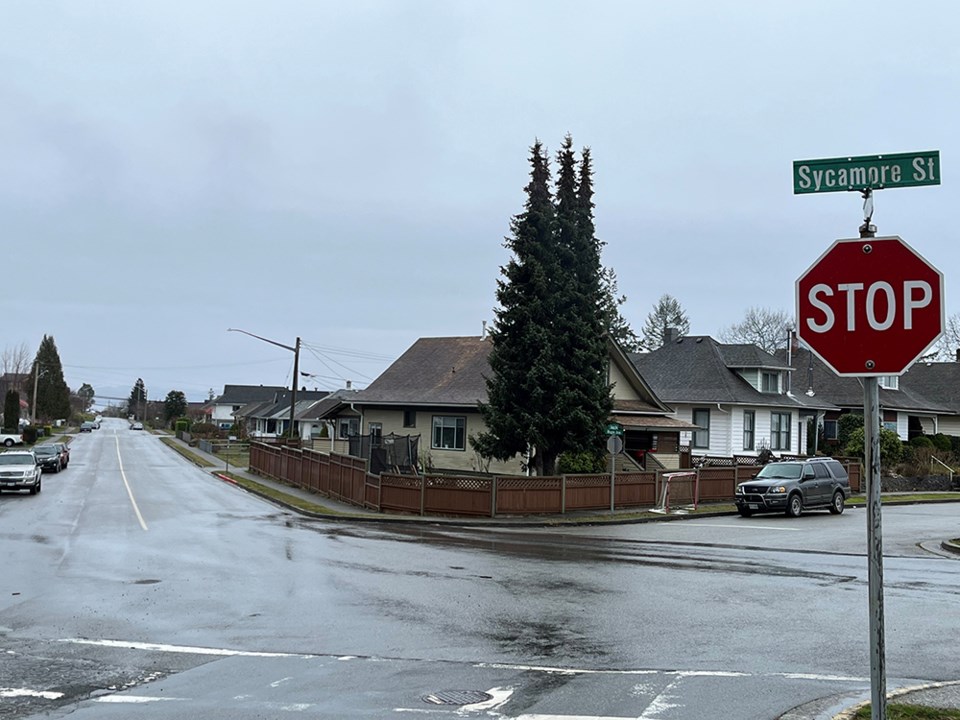City of Powell River staff will proceed with initiating design for the Maple Avenue and Sycamore Street safer streets project.
At the May 2 committee of the whole meeting, city manager of planning services Daniella Fergusson said she was making a presentation to provide a brief overview of community engagement conducted into the project.
A total of 223 people attended three community workshops in mid-April to raise awareness about the engagement opportunities. More than 400 comments were received at the community workshops regarding the project.
Fergusson said recommendations of the staff report resulting from the consultation include leaving parking and bus stops as they are today. The recommendations also include taking out the curb extensions, speed humps and speed cushion proposals in the concept plan, which will help achieve the goal of leaving parking and bus stops the way they are.
There is also a recommendation to improve the Maple and Aspen Street intersection. Fergusson said there were a number of comments about people feeling unsafe there, with poor sightlines and large crossing distances.
Improving the intersection of Highway 101 and Sycamore was another recommendation, Fergusson said Arbutus Avenue is a provincial highway, so the city can’t make changes on the highway, which is the responsibility of the ministry of transportation and infrastructure, but the city can make changes to Sycamore.
There was also a recommendation that the intersection of Ash Avenue and Maple/Sycamore be improved because traffic moving uphill on Ash doesn’t have a stop and it’s confusing, said Fergusson. She added that there was a recommendation to take another look at the four-way stop configurations, and there was a fair amount of support from community members for having a 30-kilometre per hour speed limit on Maple and Sycamore.
City councillor Cindy Elliott said it appeared planning staff members were looking for direction to move forward with creating a new design based on these principles of where there was support and where there was no support.
Councillor George Doubt, who attended the engagement sessions, said what staff had taken out of the conversations matched what he heard.
“I like the suggestion that we refer this back to planning to get a detailed design plan that would come back and we could take a look at the details and get it going,” said Doubt. “There has been a lot of time and effort invested by a lot of members of the community, so I’d like to go ahead with the suggestion.”
Public process
Councillor Trina Isakson said the project was difficult with the public and even council not knowing when and how to influence the process.
“It led to anger directed in places where it wasn’t necessarily effective, and there was some confrontation and difficulties, and so when people have needs they want to express, knowing what the outlet is, is really important,” said Isakson. “We, as a city and a council, can do more to connect with people in more ways and make it clear what level of engagement is expected on different projects. Council is getting really involved in the design of the project and I feel between community input and staff, a lot of solutions can be found without having to come back to us all the time.”
Isakson said she heard from people who wanted to attend the open houses but were concerned about getting in fights with their neighbours. She said people approached her who wanted to share their views, but also wanted to maintain cordial relationships, so weren’t vocal about their support for some of the aspects of the project.
Councillor Rob Southcott said a sector of the community didn’t turn up that much to the community consultations, nor has had a lot of direct input. He said Powell River is a car-dependent community, and that he has met with youth and their interests were focused on sustainability. He said in the future, this is not going to involve private vehicles as much as it does now.
“The thing that makes me sad about this whole process is there was so much attention on the threat of the loss of parking,” said Southcott. “I don’t deny that it is a concern for many people, but it overshadows any consideration of the next generation. Urban planning creates these enhanced people-connecting spaces and it’s the connections between us, I firmly believe, that bring us together to find creative solutions.
“I do agree with the recommendations, but I absolutely urge us to think very carefully about what possible potential there was in this project that maybe we completely overlooked.”
Doubt said the recommendation in the report was that council direct staff to proceed to a detailed design that incorporates public input from engagement sessions and follows coordination with grant funders on required approvals for design changes.
“That is a good recommendation and allows staff to complete a design with the public consultation,” said Doubt. “We had a project that the public was telling us hadn’t had enough public consultation and needed more input, so we did an extensive public engagement. We have come up with a great deal of public input to improve a very important street and it’s something we should take advantage of.”
Doubt suggested the recommendation in the report be forwarded to city council. The committee was advised that it could direct staff to proceed and carried the motion.
Fergusson said staff will proceed as quickly as possible because the provincial grant for the project has a March 2024 expiry date, which would mean construction on the project would begin this year.

.jpg;w=120;h=80;mode=crop)

